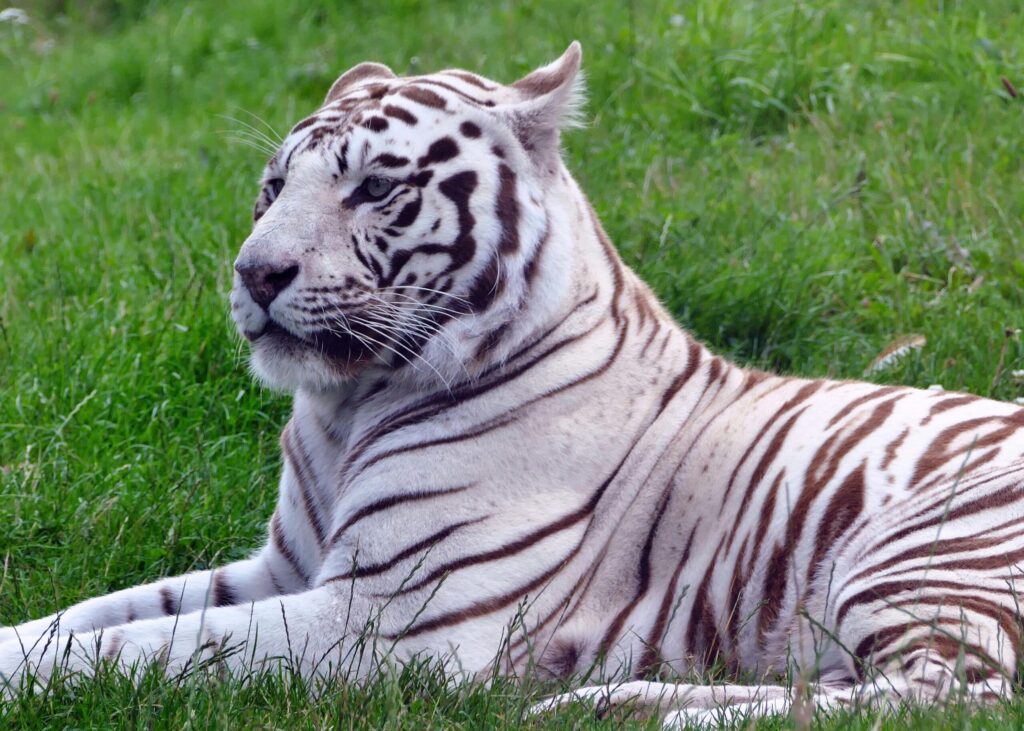Majestic Tigers: Discover the Power and Beauty of Nature’s Most Striking Predator. The very name “Majestic Tigers” conjures images of power, grace, and wild beauty. These apex predators, with their iconic stripes, reign supreme in diverse habitats, from the steamy jungles of India to the snowy forests of Siberia. This article offers a deep dive into the world of Majestic Tigers, exploring their biology, behavior, conservation status, and the best places to witness their majesty firsthand.
A Symphony of Stripes and Power:

Tigers are the largest members of the Panthera genus, a group that also includes lions, leopards, jaguars, and snow leopards. Their iconic stripes, unique to each individual like human fingerprints, provide camouflage in the dappled light of their forest homes. These stripes aren’t just skin deep; they’re embedded in the tiger’s skin, meaning if you shaved a majestic tiger, its stripe pattern would still be visible!
Beyond their striking appearance, majestic tigers possess incredible physical prowess. Their powerful legs propel them through their territory, while their sharp claws and teeth make them formidable hunters. They are solitary creatures, typically only coming together to mate. Female tigers, or tigresses, are devoted mothers, raising their cubs for up to two years, teaching them the skills necessary for survival.
The Diverse World of Majestic Tiger Subspecies:

While all tigers share a common ancestry, several subspecies exist, each adapted to their unique environments. The Bengal majestic tiger, perhaps the most iconic, roams the jungles and grasslands of India. Siberian tigers, the largest of the subspecies, brave the harsh winters of Russia’s Far East. Other subspecies include the Sumatran tiger, the smallest, adapted to the rainforests of Indonesia, and the Malayan tiger, found on the Malay Peninsula. Sadly, some subspecies, like the Caspian, Javan, and Balinese tigers, are already extinct, a stark reminder of the threats facing these incredible animals.
A World in Peril: Conservation Challenges:
Despite their power and majesty, tigers face a grim reality. Habitat loss due to deforestation and human encroachment, poaching for their pelts and body parts used in traditional medicine, and conflict with humans are just some of the challenges pushing tigers toward extinction. The illegal wildlife trade continues to be a major threat, fueled by demand for tiger products.
Conservation efforts are crucial to ensuring the survival of these magnificent animals. Organizations around the world are working tirelessly to protect tiger habitats, combat poaching, and raise awareness about the plight of tigers. These efforts include establishing protected areas, working with local communities to reduce human-wildlife conflict, and supporting anti-poaching patrols.
Experiencing Majestic Tigers in the Wild (Responsibly):

For those captivated by tigers, witnessing them in their natural habitat is an unforgettable experience. However, it’s crucial to do so responsibly, prioritizing the well-being of the animals and supporting sustainable tourism practices. Here are a few places where you can have a chance encounter with tigers:
- India’s National Parks: Ranthambore, Kanha, Bandhavgarh, and Corbett National Parks are renowned for their tiger populations and offer guided safaris.
- Siberia’s Wilderness: A trip to the Russian Far East offers the chance to see Siberian tigers in their snowy habitat, though this requires careful planning and permits.
- Sumatra’s Rainforests: Explore the lush rainforests of Sumatra for a chance to glimpse the elusive Sumatran tiger, while supporting conservation efforts in the process.
Remember, ethical wildlife tourism is essential. Choose operators that prioritize animal welfare, respect their natural behavior, and contribute to local communities. Avoid any interactions that involve direct contact with tigers or exploit them for entertainment.
A Call to Action: Supporting Tiger Conservation:
The future of tigers hangs in the balance. These magnificent creatures are at a critical crossroads, and their fate rests in our hands. We all have a role to play in ensuring their survival. Whether it’s supporting conservation organizations, raising awareness about the threats they face, or making conscious choices as consumers, every action counts.
Why Your Support Matters:
My work in creating educational content about wildlife, like this article about tigers, is driven by a passion for conservation and a desire to connect people with the wonders of the natural world. I believe that through knowledge and understanding, we can inspire action and create a better future for all living things.
Creating this content takes significant time and resources. By donating, you’re directly supporting my efforts to produce more informative and engaging articles, videos, and other educational materials. Your contribution will help me reach a wider audience, raise awareness about critical conservation issues, and empower individuals to make a difference.
Every dollar you donate will go towards:
- Research and fact-checking: Ensuring the accuracy and reliability of the information I share.
- Content creation: Producing high-quality articles, videos, and other educational resources.
- Website maintenance and hosting: Keeping this platform accessible to everyone.
- Outreach and promotion: Sharing this content with a wider audience to maximize its impact.
By clicking the donation button below, you’re not just supporting my work; you’re investing in the future of wildlife conservation. You’re becoming a part of a community of individuals who care about the planet and are committed to making a difference. Thank you for your generosity and your support. Together, we can ensure that majestic tigers continue to roam the wild for generations to come.


